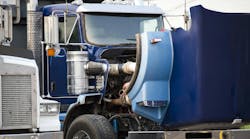Manager: Don Everingham
Title: Facility manager-fleet maintenance
Fleet: H-E-B Grocery, San Antonio, TX
Operation: Private carrier for 300-store grocery chain running 450 Class 8 tractors
PROBLEM
When Don Everingham was put in charge of H-E-B's fleet maintenance operation in 2002, he came face to face with a major engine crisis. The caterpillar C-12s powering the fleet's 450 tractors were breaking down at an alarming rate and required far more than average maintenance.
“The technicians told me three days after I started that the fleet had switched to a cheaper engine oil and extended drain intervals out to 40,000 miles to save money,” he said. “That decision left me looking at $3-million worth of damaged engines. We keep our trucks for five years, or about 750,000 miles of operation. But we were faced with having to get new engines for trucks just halfway into their life cycle.”
After switching the fleet back to a premium engine oil supplied by Shell, Everingham needed to find a way to quickly sample the engines so that he could determine those that needed major overhauls and those that were relatively OK and could wait on repairs.
Physically inspecting a cross-section of the fleet's equipment proved too time consuming. “It would take us half a day at best just to open up an engine to inspect it. We couldn't afford that kind of down time just to start the process. We needed a quick way to assess the amount of damage we were facing,” he explained.
SOLUTION
Everingham turned for help to a video inspection service called VideoCheck, offered by Shell for heavy-duty engines. The Shell system uses a miniature digital camera fed into the diesel engine through the cylinder fuel injector port using a fiber-optic cable to illuminate the inside of the engine and transmit images to a monitor, letting technicians inspect the piston crown, combustion chamber, cylinder wall, valve seats and head.
After setting up the system in one of H-E-B's maintenance bays, Shell's VideoCheck techs inspected and diagnosed one of the fleet's trucks in about 10 minutes. They were able to wrap up inspections of a random sample of H-E-B's fleet in just one day.
Getting that data in hand enabled Everingham to start mapping out a repair strategy for all the damaged engines. “It allowed me to put together a priority engine repair list,” he said. “VideoCheck confirmed that the older the engine was, the more damage it likely suffered. We took the oldest and most severely damaged engines out of service first, then went on down the line to the ones with the least amount of damage.”
All told, 160 of H-E-B's truck engines needed repair. For half, it meant an $11,000 repair to bring it back to spec; the rest averaged $4,500 per unit. In either case, it was a far cry from the $22,000 price of a new engine.
Fixing all of those trucks made for a very long year, with six or seven trucks in the shop at any one time. But by November 2005, all the engines were fixed and back on the road. And they went into service with new oil drain intervals set at 20,000 miles, as well as with a vigorous oil analysis program in place to make sure those newly repaired units didn't develop any more problems.
Maintenance Bay presents case studies detailing how fleets resolve maintenance-related issues.


